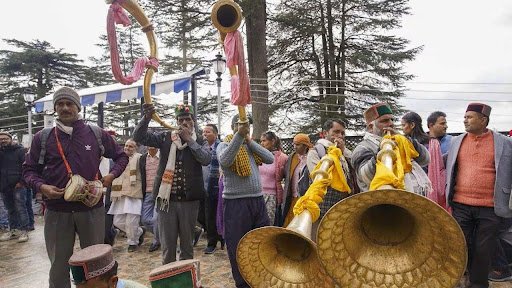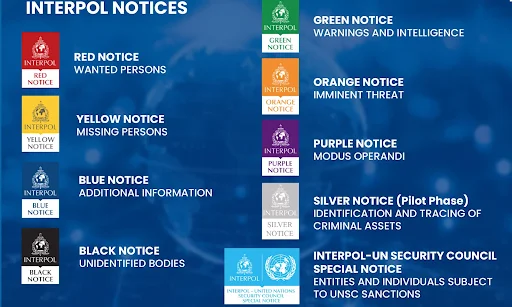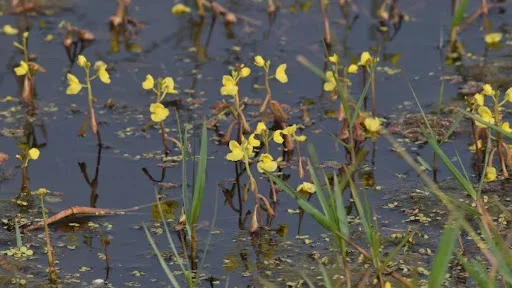UPSC GS 1
Hatti Tribes
- News: The vibrant Boda Tyohar festival, the largest annual celebration for the Hatti tribes of the Trans-Giri region in Himachal Pradesh, kicked off recently.
- Definition:
- The Hattis are a close-knit community named after their traditional trade of selling homegrown crops, vegetables, meat, and wool at local markets known as ‘haats.’
- Hatti men wear a distinctive white headgear during ceremonial events, symbolizing their cultural identity.

- Geographic Distribution:
- The Hatti community resides in the region spanning the Himachal-Uttarakhand border, specifically in the basins of the Giri and Tons rivers, both tributaries of the Yamuna.
- The Tons River serves as the natural boundary between Himachal Pradesh and Uttarakhand.
- Two primary Hatti clans exist:
- One in the Trans-Giri area of Sirmaur district, Himachal Pradesh.
- The other in the Jaunsar-Bawar region of Uttarakhand.
- Despite being in different states, the clans share similar traditions, and intermarriages between them are common.
- Governance:
- The community is governed by a traditional council called ‘khumbli,’ which resolves internal and community matters.
- Economic Activities:
- The Hatti community depends largely on agriculture for their livelihood, particularly focusing on cash crops suited to their climate.
- Seasonal eco-tourism in regions like Kinnaur, Lahaul, and Spiti has become an additional source of income for many Hattis.
- Demographics:
- As per the 2011 Census, the Hatti population was recorded at 2.5 lakh, with an estimated increase to approximately 3 lakh by 2023.
- Recognition as Scheduled Tribe (ST):
-
- In 2023, the Indian government granted Scheduled Tribe (ST) status to the Hattis in Himachal Pradesh.
- The Jaunsar-Bawar region of Uttarakhand was already recognized as a Scheduled Tribe in 1967.
Read also: A Comprehensive Guide to Collective Farming for UPSC Aspirants
National Youth Day 2025
- News: January 12 is celebrated as National Youth Day which is the birth anniversary of Swami Vivekananda.
- National Youth Day:
- Date: Celebrated annually on 12th January to mark the birth anniversary of Swami Vivekananda.
- Origin:
- The Indian Government first declared the celebration of Swami Vivekananda’s birthday as National Youth Day in 1984.
- Since then, the day is observed nationwide to honor his contributions.
- Theme for 2023:
-
- The theme, “Viksit Yuva Viksit Bharat”, emphasizes that the progress of India’s youth leads to the overall development of the nation.

- About Swami Vivekananda:
- Birth:
- Born on 12th January 1863 in a Bengali family in Calcutta as Narendranath Datta.
- His birthday was declared National Youth Day in his honor.
- Early Life:
- Displayed an early interest in Western philosophy, history, religion, spirituality, and theology.
- Known for meditating before images of Hindu deities.
- Met his guru, Ramakrishna Paramhansa, in 1881 and remained his devoted disciple until Ramakrishna’s death in 1886.
- Adopted the name Vivekananda in 1893, upon the suggestion of Maharaja Ajit Singh of Khetri State, replacing his earlier name Sachidananda.
- Literary Contributions: Authored renowned works such as:
- Raja Yoga
- Jnana Yoga
- Karma Yoga
- Death:
- Achieved Mahasamadhi on 4th July 1902.
- Contributions and Philosophy:
- Recognized as one of India’s greatest spiritual leaders, inspiring youth to lead pure and purposeful lives.
- Netaji Subhas Chandra Bose referred to him as the “Maker of Modern India”.
- Introduced Yoga and Vedanta to the Western world.
- Yoga: An ancient Indian practice symbolizing the union of body and consciousness.
- Vedanta: One of the six schools of Hindu philosophy, based on the Upanishads, focusing on the inquiry into Brahman (Ultimate Reality).
- Advocated Neo-Vedanta, a modern interpretation combining spirituality with material progress.
- Neo-Vedanta reconciles dualism and non-dualism and rejects illusionism in Shankara’s philosophy.
- Promoted interfaith awareness and elevated Hinduism on the global stage.
- Demonstrated how science and religion could coexist harmoniously.
- Emphasized the universal nature of religion as a shared human experience of transcendence.
- Global Influence:
- Delivered a landmark speech at the Parliament of the World’s Religions in Chicago (1893), emphasizing:
- Universal acceptance, tolerance, and the importance of religion.
- His opening phrase, “My brothers and sisters of America”, received worldwide acclaim.
- Earned the title of “Messenger of Indian Wisdom to the Western World” through lectures in the US and UK.
- Establishments and Movements:
- Founded the Ramakrishna Mission (1897) to spread noble ideas and uplift the poor.
- Toured India extensively to educate people on improving their economic and spiritual conditions.
- Established Belur Math (1899), which became his permanent residence.
- Focus on Education and Social Reform:
-
- Advocated education as the foundation for India’s regeneration and progress.
- Stressed the importance of character-building education for youth.
- Championed educational opportunities for women and marginalized communities.
- A prominent thinker in social reform, joining the Brahmo Samaj to oppose child marriage and illiteracy.
UPSC GS 2
National Organ and Tissue Transplant Organisation (NOTTO)
- News: The National Organ and Tissue Transplant Organisation (NOTTO) has announced that central government employees who donate organs will receive 42 days of special casual leave.
- About National Organ and Tissue Transplant Organization (NOTTO)
- Definition: National Organ and Tissue Transplant Organization (NOTTO) is a National level organization set up under the Directorate General of Health Services, Ministry of Health and Family Welfare, Government of India.

- Aim: National Network division of NOTTO functions as apex centre for:
- All India activities of coordination and networking for procurement and distribution of Organs and Tissues and
- Registry of Organs and Tissues Donation and Transplantation in the country.
- Divisions: NOTTO has two divisions:
- National Human Organ and Tissue Removal and Storage Network:
- This has been mandated as per the Transplantation of Human Organs (Amendment) Act 2011.
- It is the nodal networking agency for Delhi and shall network for Procurement Allocation and Distribution of Organs and Tissues in Delhi.
- National Biomaterial Centre:
- The Transplantation of Human Organs (Amendment) Act 2011 has included the component of tissue donation and registration of tissue Banks.
- The main aim of establishing this centre is to fill up the gap between ‘Demand’ and ‘Supply’ as well as ‘Quality Assurance’ in the availability of various tissues.
- Functions of NOTTO :
-
- Network with similar regional and state level organizations.
- All registry data from States and Regions would be compiled and published.
- Creating awareness, promotion of organ donation and transplantation activities.
- Co-ordination from procurement of organs and tissues to transplantation when organ is allocated outside the region.
- Dissemination of information to all concerned organizations, hospitals and individuals.
- Monitoring of transplantation activities in the Regions and States and maintaining data-bank in this regard.
- To assist in data management for organ transplant surveillance & organ transplant and Organ Donor registry.
- Consultancy support on the legal and non-legal aspects of donation and transplantation.
- Coordinate and Organize trainings for various cadre of workers.
Silver Notice
- News: INTERPOL has published its first-ever Silver Notice to help trace and recover criminal assets, combat transnational organized crime and enhance international police cooperation.
- About Silver Notice:
- The Silver Notice is a recent addition to Interpol’s series of color-coded alerts, created to assist countries in tracking and recovering assets acquired through criminal means.
- It enables participating nations to seek information on assets tied to crimes such as fraud, corruption, drug trafficking, and environmental offenses.
- The notice is designed to trace assets that have been laundered across international boundaries.
- Initiated as part of a pilot project involving 52 nations, including India, the Silver Notice was launched after Italy requested assistance in locating assets belonging to a senior mafia figure.
- The project will run until at least November 2025, with a total of 500 notices allocated for the participating countries.

- How It Works:
- Countries can utilize the Silver Notice to request data on assets such as properties, vehicles, bank accounts, and businesses linked to criminal activities.
- This mechanism helps identify and locate assets, paving the way for legal actions like seizure or confiscation, depending on the applicable national laws.
- India’s Role:
-
- India is an active participant in this pilot initiative and is expected to derive significant advantages.
- With a large number of fugitive economic offenders and substantial amounts of black money moved abroad, the Silver Notice could play a crucial role in tracking and reclaiming these assets.
UPSC GS 3
Pink Fire Retardant
- News: Pink retardants are being used to contain the Los Angeles wildfires, with thousands of gallons of red flame being dropped around the city in an attempt to limit the devastation.
- Definition:
- Fire retardant is a chemical mixture designed to either extinguish fires or slow their spread.
- Various types of fire retardants exist, with Phos-Chek being the most widely used in the United States.
- Phos-Chek is composed of water, fertilizers, and colorants, with common salts like diammonium phosphate ([NH4]2HPO4) and ammonium polyphosphate ((NH4PO3)n).
- Unlike water, salts such as ammonium polyphosphate do not evaporate quickly, enabling them to remain effective for longer durations.

- Functionality:
- Fire retardant is sprayed in advance of a fire to coat vegetation, effectively blocking oxygen and preventing combustion.
- When the retardant interacts with cellulose in plants, it absorbs heat energy from the fire and forms non-flammable carbon material.
- The added color ensures visibility against the landscape, aiding firefighters in creating fire lines to protect lives and property.
- Concerns with Fire Retardants:
- Toxic Metal Contamination:
- A 2024 study in the United States revealed that Phos-Chek contains harmful metals.
- Between 2009 and 2021, over 400 tons of heavy metals were introduced into the environment during fire suppression activities.
- These metals include chromium and cadmium, which are linked to cancer, kidney damage, and liver diseases in humans.
- Toxic metals also pose a significant threat to waterways, contributing to pollution in rivers and streams and harming aquatic life.
- Effectiveness and Limitations:
-
- The efficiency of Phos-Chek remains under scrutiny, as aerial retardants work optimally only under specific conditions, such as slope, fuel type, terrain, and weather.
- These ideal conditions are becoming increasingly scarce due to the impacts of climate change, narrowing the opportunities for effective application.
Blue Flag certification
- News: Kappad beach in Kozhikode, has once again earned the prestigious Blue Flag certification, marking the fourth consecutive year it has achieved this honour.
- Definition:
- The Blue Flag certification is an internationally acknowledged eco-label granted by the Foundation for Environmental Education (FEE), based in Denmark.
- Launched in France in 1985, the program expanded globally in 2001 to include regions outside Europe.
- It is among the most recognized voluntary accolades awarded to beaches, marinas, and sustainable tourism boats.

- Objectives and Mission:
- The Blue Flag program aims to promote sustainable development in marine and freshwater areas.
- Its mission focuses on fostering sustainability within the tourism sector through environmental education, protection, and sustainable development practices.
- Evaluation Criteria: The certification assesses adherence to four main criteria:
- Water Quality: Ensuring clean and safe water.
- Environmental Management: Promoting responsible management of coastal and marine ecosystems.
- Environmental Education: Encouraging awareness and education about ecological preservation.
- Safety: Ensuring visitor safety and well-maintained facilities.
- Indian Beaches with Blue Flag Certification: India is home to several beaches that have achieved Blue Flag certification:
- Shivrajpur Beach – Gujarat
- Ghoghla Beach – Diu
- Kasarkod Beach – Karnataka
- Padubidri Beach – Karnataka
- Kappad Beach – Kerala
- Rushikonda Beach – Andhra Pradesh
- Golden Beach – Odisha
- Radhanagar Beach – Andaman and Nicobar Islands
- Kovalam Beach – Tamil Nadu
- Eden Beach – Puducherry
- Minicoy Thundi Beach – Lakshadweep
- Kadmat Beach – Lakshadweep
Punatsangchhu-II Hydroelectric Project
- News: Bharat Heavy Electricals recently said that it has successfully commissioned two units of the 6*170 MW Punatsangchhu-II Hydroelectric Project (PHEP-II) in Bhutan.
- Punatsangchhu-II Hydroelectric Project (PHEP-II): Overview
- The Punatsangchhu-II Hydroelectric Project (PHEP-II) is a 1 GW run-of-the-river power generation facility under construction in Bhutan’s Wangdue Phodrang district.
- Situated on the right bank of the Punatsangchhu River, the project is being developed under the Punatsangchhu II Hydroelectric Project Authority.
- It operates under an Inter-Governmental Agreement (IGA) between the Royal Government of Bhutan and the Government of India.
- Project Specifications:
- The project involves the construction of a 91m-high and 223.8m-long concrete gravity dam.
- It includes an 877.46m-long diversion tunnel with a diameter of 12m and a discharge capacity of 1,118 cubic meters per second.
- Other key structures include:
- A 168.75m-long and 22m-high upper cofferdam.
- A 102.02m-long and 13.5m-tall downstream cofferdam.
- The power plant will house an underground powerhouse featuring six Francis turbines, each with a capacity of 170 MW.
- Once fully operational, the plant is expected to generate 4,357 million units of electricity annually.
- Funding Details:
- The project is financed by the Government of India through a combination of 30% grant and 70% loan at a 10% annual interest rate, repayable over 30 semi-annual installments starting one year after the mean date of operation.
- Energy Export:
-
- All surplus electricity generated by the project will be exported to India.
See this: Naxalite Movement in India: Causes and Solutions | UPSC
INS Vaghsheer
- News: Mazagon Dock Shipbuilders Limited (MDL) has delivered the final Scorpene-class submarine, Vaghsheer, to the Indian Navy, completing Project 75.
- Definition:
- INS Vaghsheer is the sixth submarine in the first batch of six Kalvari-class submarines constructed for the Indian Navy.
- The submarine is named after the sand fish, a lethal deep-sea predator found in the Indian Ocean.
- It was launched in April 2022 and has undergone rigorous trials to test its endurance, stealth capabilities, and combat efficiency.
- The other submarines in the Kalvari-class fleet are Kalvari, Khanderi, Karanj, Vela, and Vagir.
- Features and Capabilities
- Stealth Technologies: Equipped with advanced stealth features, including reduced radiated noise and a highly efficient hydrodynamic design, making it one of the quietest submarines globally.
- Combat Power: Armed with precision-guided weapons, including torpedoes and tube-launched anti-ship missiles. Designed to perform a variety of offensive and defensive naval operations.
- Mission Versatility: Capable of undertaking diverse missions such as:
- Anti-submarine warfare.
- Intelligence gathering.
- Operations in varied maritime environments.
- Indigenous Systems:
- Features domestically developed systems such as:
- An air-conditioning plant.
- An internal communication network.
- The Ku-Band SATCOM system for enhanced communication capabilities.
Utricularia
- News: A rare and unique carnivorous plant ‘Utricularia’ has been found in Rajasthan’s Keoladeo National Park in large numbers.
- About Utricularia:
- Utricularia (bladderwort) is a genus of carnivorous plants in the family Lentibulariaceae.
- Currently, 220 listed species occupying temperate and tropical habitats throughout the world; it is the most diverse and widespread genus of carnivorous plants.

- They are characterized by small hollow sacs that actively capture and digest tiny animals such as insect larvae, aquatic worms, and water fleas.
- Bladderworts can be found in lakes, streams, and waterlogged soils around the world, and several are invasive species that have spread to novel habitats.
- Bladderwort plants lack roots and usually have a horizontal floating stem bearing simple or divided leaves.
- Small carnivorous bladders are produced along the stem can range from dark to transparent in color.
- Bladderworts trap small organisms in their tiny bladders, which have a trap door that is triggered by hairs on the door.
- When prey comes in contact with the hairs, the door opens in a millisecond, sucking the animal in and closing in about 2.5 milliseconds.
- The flowers are bisexual and bilaterally symmetrical.

